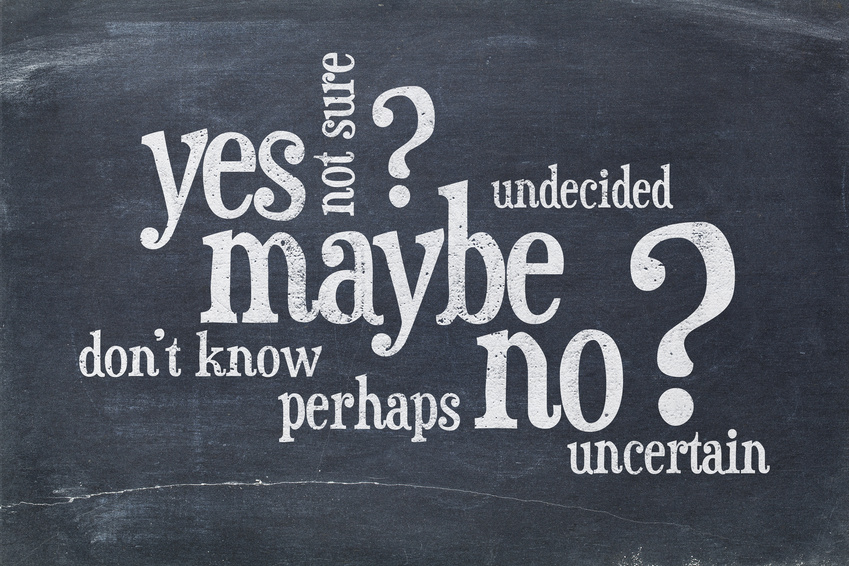
Do you struggle with making decisions? I didn’t consider myself particularly challenged in this area until some significant and disruptive changes occurred. I began to second-guess myself at every turn. I doubted my ability to make good choices, even small ones. After all, some I had made certainly didn’t seem to be working out as planned. Indecision started settling over me and, with that, a marked loss of confidence.
In very short order I recognized that there is a definite myth when it comes to indecision.
It isn’t indecision at all. It’s a surrender of choice.
When we fail to decide, we are, in essence, letting someone or something else direct the results. When that happens, those results will rarely be what we would have chosen ourselves.
It was clear that I needed to take back the reigns and get on with it!
It is often said that we don’t truly appreciate something until we’ve lost it or at least faced the threat of losing it. That was certainly true for me here. I had taken my ability to make decisions for granted. It came easily to me. I needed to restore that ease and confidence.
How did I do it? It started with the recognition that decision-making is not a talent. It is a skill. As with any skill, our confidence comes from the doing. I began to just decide, to make a choice—big ones, small ones, and many in between. The confidence came from the return to knowing that with each decision also comes the continued opportunity to evaluate and adjust.
Over time, a pattern began to emerge that showed me where decisions were happening with greater ease and confidence. As they say, success leaves clues. In this case, a simple four-step process had emerged that worked every time.
Step 1 – DETERMINE the real question or need
This is essential. If we think we are making a decision about A, but the actual issue is B, something will be missed, and the decision will be made with a false sense of need. By drilling down with questions and getting to what the decision is really about, all of the distracting debris will fall away.
Step 2 – Allow (and limit) an appropriate amount of time and effort for DISCOVERY
Big seems little, and little seems big. When perspective gets out of kilter, we can tend to over-analyze everything. Be brutally honest with yourself about the impact of the decision and respond proportionally. The way to do that is to consider how long you are going to live with the consequences of the choice. It can be easy to forget that most things, including our choices, are temporary anyway. By putting limits on discovering what our choices will be in terms of time, effort, and other resources, we contain the situation effectively.
Insight: I also found a +3 rule invaluable. If I needed to make a decision, instead of allowing any of them to be between just two options, I would apply the +3 rule. If someone said to choose A or B, I would challenge myself to come up with C, D, and E. If there were three choices, I came up with six. Sometimes, the decision is tough because the right choice isn’t there. Instead of agonizing over which to choose, create the choice. Just do it within a process and time frame that doesn’t allow it to drift away from you.
Step 3 – Make a choice – DECIDE
When it’s all said and done, the skill can only develop as we practice it. For us to have confidence in our choices, we first have to make them. It’s really that simple. If we understand the situation and have an adequate array of choices, this step gets much easier.
Step 4 – The decision is only truly made when we take action. The fourth step is to DO.
Non-action negates the decision. Implementation is the key to everything in life. We can fully understand our needs, create truly innovative approaches for the solutions, and make brilliant choices. But all of that will not accomplish anything if we don’t ultimately take action.
The most critical insight for me was recognizing that how we handle the small things in life is the best predictor of how we manage the more significant things. If we aren’t making good choices during our day, ultimately, that shows up as ineffective choices for our lives. Personal leadership and responsibility are the keys.
Live (decide) today like you want tomorrow to be. Live (decide) well!


